The End of the Skywalker Saga: The Failures of The Rise of Skywalker, Part 5
The Skywalker Saga has always been about family – even when it was just Star Wars, before it ever took that name to represent one component of the overall franchise. In A New Hope, a key motivation for Luke is to train with Obi-Wan Kenobi to “become a Jedi like my father.” The Empire Strikes Back reveals that Luke’s father is Darth Vader; the next film that Leia is his sister. Return of the Jedi hinges on Luke’s goal to bring their father back from the dark side. By itself, the Original Trilogy is a two-generation family drama; by filling out the backstory, the Prequel Trilogy turned the earlier generation’s bonds and conflicts into stories of their own. After a decade gap, the Sequel Trilogy added a third generation to the family saga, including a son by birth and upbringing and a daughter by acceptance and choice.
None of this is an accident. It is no coincidence that the lead character of the Original Trilogy – named Luke, less than a syllable removed from Lucas – has conflicts with his father, just as George clashed with his father’s career expectations and his generation rose in civil rights and anti-war protests against the leadership of their forebears. The more story he told, the more family drama he added; even The Clone Wars animated series, originally conceived as an anthology format about a wide variety of characters, soon came to center on several interconnecting storylines based on familial and fraternal bonds. In November 2015 on the eve of an Episode VII made by others, Lucas told CBS News, “People don’t actually realize it’s actually a soap opera and it’s all about family problems – it’s not about spaceships.”
Star Wars is space opera, but it is also soap opera. Especially for the Skywalkers.

The Fates of the Skywalker Characters
Starting in the summer of 2018, Episode IX was consistently described in marketing and promotion as the end of the Skywalker Saga. When the film released, fans learned that this was not mere hype to draw audiences to theaters, but an accurate description of the story. Though adopted daughter Rey lives on, the rest of the family that defined Star Wars since 1977 had its story drawn to a close by The Rise of Skywalker.
Anakin Skywalker is functionally absent. Since Celebration Chicago in April 2019, J.J. Abrams had emphasized a talking point that The Rise of Skywalker would conclude not only the Sequel Trilogy, but the nine-movie story, as well. Prior to The Force Awakens, Anakin’s story covered six movies, and Luke’s only three – yet Luke is far more prominent in The Rise of Skywalker. Darth Vader is mentioned occasionally through the Sequel Trilogy, in part to explain Kylo Ren’s motivation to exceed him. By contrast, Anakin’s role as the Chosen One, his heroism during the Clone Wars, his betrayal in Order 66, and his sacrifice to bring balance to the Force are ignored. In a movie based around the apparent return of Palpatine and yet another mythical-stakes showdown between the Jedi and the Sith, it is truly bizarre to have Anakin’s role in the film relegated to a couple of fleeting lines of dialogue during Rey’s near-death meditation a few minutes before the movie ends.
Padmé Amidala, meanwhile, is literally absent. In a story built around opposites – Rey and Kylo Ren, light and dark, Jedi and Sith, heroism and villainy, Skywalker and Palpatine – The Rise of Skywalker touches upon Anakin/Vader and omits his foil. Anakin’s flaw is his desire for power, Padmé’s flaw is her idealism; Anakin is too selfish, Padmé is too selfless; Vader brings about a dictatorship, Padmé believes in democracy. When Lucas designed the Prequel Trilogy’s backstory to the Original Trilogy, he reverse-engineered the parents of Luke and Leia to match their traits. Luke is a Jedi like their father, Leia is a politician like their mother; Luke and Padmé believe there is still good in their father, Leia and Anakin will not stop fighting until the war is won; Luke and Padmé suffer the institutions they lead crumbling beneath them, Leia and Anakin are effective wartime generals who earn the respect and admiration of the forces they lead. Kylo Ren is obsessed with the dark side version of his grandfather; it is conspicuous that the Sequel Trilogy never juxtaposes it with the light side legacy of his grandmother.
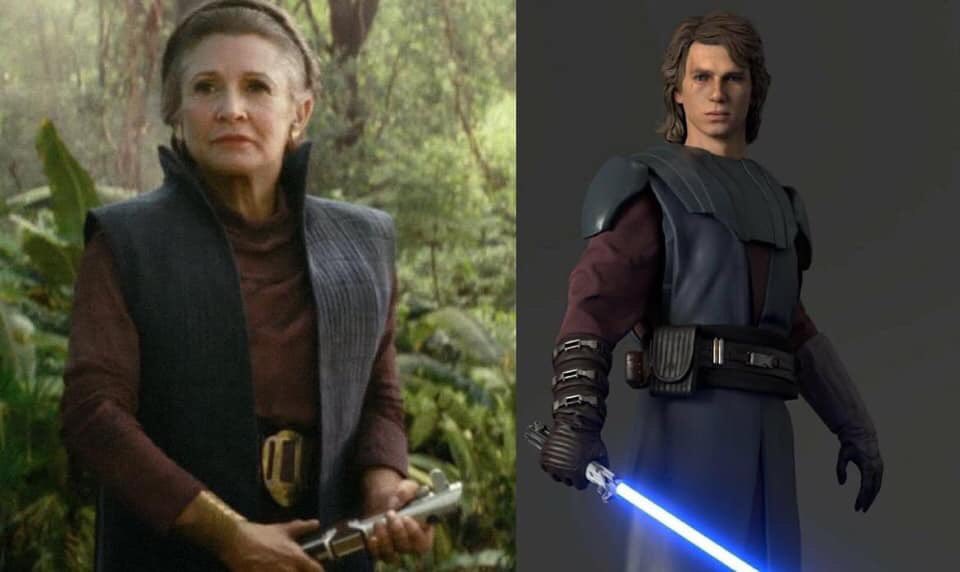
Luke Skywalker’s lone interactive scene in The Rise of Skywalker seems crafted principally to repudiate his portrayal in The Last Jedi, leaving no time to do anything else with him. Instead of tossing his father’s lightsaber over his shoulder into the sea, Luke snatches it from the air before Rey can incinerate it – and proclaims a Jedi’s weapon worthy of more respect. Instead of a dismissive and fatalistic grumpy hermit, Luke is a warm, kind, and reassuring avuncular figure – who seeks to support and embolden Rey in what she must face. Instead of leaving Rey to depart in disgust with only the books she scavenged from the library he intended to burn down, Luke levitates his old X-wing from its watery grave – and smiles broadly as he passes on the legacy of Red Five to his spiritual heir. His act of levitation also reinforces how much Luke has grown, in a positive way, since his youth in The Empire Strikes Back, course-correcting for the regressed exile who had cut himself off from the Force entirely in The Last Jedi. (It also demolishes the conceit of Luke’s denouement: his fatal effort at galaxy-spanning astral projection was completely gratuitous; he simply could have flown his X-wing to Crait in person.) Even if one accepts the notion that the writers of The Rise of Skywalker intended Luke’s portrayal as a call-and-response with The Last Jedi, showing that Luke has learned the lessons of his failures rather than repudiating the failure-driven characterization as such, the end result is that The Rise of Skywalker does nothing more with Luke. After reaffirming that Luke Skywalker’s story ends true to who he should be, The Rise of Skywalker gives him the final reassuring line of dialogue to Rey before she rises to end Palpatine, and a smile of approval as she takes the Skywalker legacy as her own in the epilogue.
Leia Organa’s resolution in The Rise of Skywalker is far less affirming than her brother’s. As we discussed in a prior post in this series, the iconic self-rescuing princess of the Original Trilogy ends up with the worst fate imaginable for such a heroine: she is fridged, killed off in service of the emotional pain of her evil son Kylo Ren, his anguish apparently sufficiently extreme to cause him to turn back from the dark side and return to the light side of the Force as Ben Solo. But even before that, her entire life’s work has ended in nothing but tragedy. According to the Sequel Trilogy, the New Republic she sought to build collapses, large sections of the galaxy are reconquered by a resurgent Imperial remnant, the Resistance she builds to deal with the threat of the First Order is basically annihilated, her only child falls to the dark side, her marriage to Han becomes estranged, her brother Luke disappears into exile, and she outlives many of her dearest friends. To top it off, Leia never fulfills the potential set out for her in Return of the Jedi: to complete her training and become a Jedi Knight. For a character who has inspired so many fans for so many years, this is a distinctly grim and uninspired way to end her story.
Ben Solo might have been a character built upon the two generations before him to take the Skywalker family drama in a new direction, but to no avail. As we discussed in the previous post in this series, the Villain’s Journey for Kylo Ren pointed toward a different and timely narrative for the character compared to Darth Vader – but was not taken to its culmination. Likewise, the redemption of Ben Solo was not a revision or variation or rhyme on his grandfather’s, but a simple copy-paste – and without earning the motivation for his return to the light within the story of The Rise of Skywalker, in contrast to Return of the Jedi. The third generation character ultimately brought little new, and mostly more of the same. Perhaps the most significant difference is that Ben Solo does not appear as a Force ghost to Rey after his death, as Anakin did for Luke. Does this imply that Ben Solo’s redemption is incomplete, that he remains in a kind of Force purgatory? Are we meant to infer that Kylo Ren’s offenses against the Force, the karmic harm he caused which must be balanced, is worse than Darth Vader’s? Or does the prophesied Chosen One warrant a special dispensation that his grandson, not a foretold savior, is denied? The Rise of Skywalker does not provide answer to these questions, or even hint toward them.
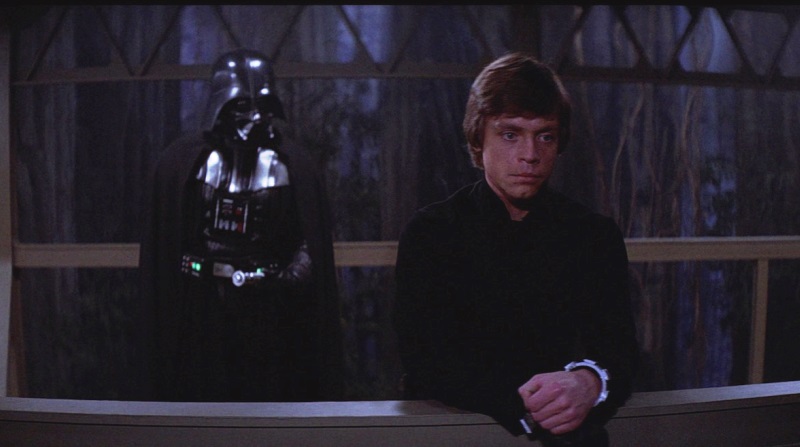
The Legacy of the Skywalkers in the Saga
Two years ago after the release of The Last Jedi, we published Skywalker At Risk: Serial Storytelling and Brand Value in part to raise a question brought into sharp relief by that film: how will the fandom – more precisely, the paying customers who make up the audience for Star Wars stories as a commercial endeavor – react if the Skywalker Saga ends in tragedy and disappointment, rather than the heroism, optimism, and hope it has represented before? Now that The Rise of Skywalker has concluded the trilogy begun by The Force Awakens and The Last Jedi, the concerns posed by that question remain.
It is certainly possible, of course, to view the ending of The Rise of Skywalker as uplifting. The Final Order has lost – it is less clear what happened to the First Order – and the Resistance has won. Palpatine is obliterated. Rey has triumphed, her victory bringing peace to the galaxy and restoring the promise of the Jedi. The twin suns of Tatooine are, finally, rising.
Or is this but a brief moment of joy? After all, the conceit of the Sequel Trilogy is that happy endings for our heroes are not quite what they seem.
From the perspective of the Skywalker family soap opera, though, the three-generation trilogy-of-trilogies story has a far different tone. The story of Anakin and Padmé ends in tragedy: Padmé and the Republic die as Darth Vader rises and two decades of galactic tyranny begins. In their youth, Luke and Leia topple the Empire; in their maturity, though, Luke never rebuilds the Jedi Order and Leia never rebuilds a stable New Republic. The tale of Ben Solo is a tragedy, too: he becomes Kylo Ren, reinstates galactic tyranny, and accepts the error of his path only in death. Taken in the aggregate, the Skywalker family has inflicted two generations of evil against one generation of ephemeral success in the karmic balance. While Rey seems poised to lead another cycle in the light, she only takes the name Skywalker after she has prevailed – and given the rest of the Skywalker story, how much confidence is warranted that her success will endure?
Even within the Sequel Trilogy on its own terms, the Skywalker family saga is hard to frame as uplifting or positive. Han Solo, hero of the Rebellion, regresses to washed-up bankrupt smuggler before sacrificing himself to try to save his son. Luke Skywalker fails his nephew and the legacy of the Jedi, and abandons his optimism and heroism, before sacrificing himself to restore hope to the Jedi and the people of the galaxy. Leia Organa creates the Resistance and helps save the Jedi from extinction, but both the military and spiritual war are won without her after she sacrifices herself to save her son from the dark side. Ben Solo grows deeper as a villain before sacrificing himself to save Rey’s life, one act of selflessness after a trilogy of selfishness. If the Skywalkers are meant to be the central characters of the nine-movie saga, this is quite a grim and fatalistic ending to write for them.
And the revelation that Rey is the granddaughter of Emperor Palpatine only makes this ending to the Skywalker family saga all the more unsatisfying. On the one hand, one could view her triumph as a repudiation of Palpatine: his own kin rejects everything he stands for, refuses to rebuild his legacy, and ends the story by renouncing his name and taking the name of his mortal enemies instead. On the other hand, fans cannot be blamed for viewing the story in the opposite manner: Palpatine, it seems, has won. Though the dark side has not conquered the galaxy and Sith rule has not been restored, his personal vengeance has succeeded. The Skywalker bloodline, begun with Anakin’s emergence by immaculate conception from the Force to counter the rising menace of the Sith, has been wiped out. Palpatine’s own kin, his granddaughter Rey, has coopted their name and legacy; in the future, the Skywalker and the Jedi will live on only through a Palpatine. Were these nine movies really about the Skywalkers at all? Or were they about Palpatine’s rise and fall and rise again? No doubt the filmmakers and Lucasfilm team did not intend this message for the overall Skywalker Saga – but neither did they foreclose it, with the story they told and how they ended it.

The Franchise and its Fandom after The Rise of Skywalker
Given the story the Sequel Trilogy tells, and particularly how it ends, it is worth asking whether Star Wars fans would have reacted so enthusiastically to the relaunch of the Skywalker Saga in Episode VII had they been told then what we know now. Would The Force Awakens have garnered quite as much excitement if marketed all along as the end of the family saga, rather than as a continuation to pass the torch to a new generation? If fans had known that the story of the beloved classic characters from the Original Trilogy would, in the Sequel Trilogy, be drawn to a close as a tragedy like the Prequel Trilogy?
One might also ask: Does it matter?
Star Wars, of course, has been bigger than the Skywalker Saga for many years. The earliest ancillary materials – the 1970s-80s Marvel Star Wars comic series, Splinter of the Mind’s Eye and Brian Daley’s adventures, then later Heir to the Empire and Dark Empire – naturally relied primarily on the Original Trilogy movie characters. But once the Expanded Universe (now Legends) began to grow in the 1990s, it produced a wide range of highly popular stories unconnected with the Skywalker family storylines. Both the Knights of the Old Republic videogame (about Revan) and the Knights of the Old Republic comic series (about Zayne Carrick) were huge successes; likewise the X-Wing novels and comics and the Republic Commando novels spun off from top-selling videogames. Other non-Skywalker stories sold more modestly, though many earned acclaim from the subsets of fandom to whom they appealed.
Over two decades, though, the evidence was undeniable: stories from the Skywalker Saga and its characters never lost their perch as the most popular and best-selling in the Star Wars franchise. The characters in those tales were many and varied: Darth Vader; Han, Luke, and Leia (plus Lando and Chewbacca); Anakin and Obi-Wan (few ancillary stories were ever told about Padmé, even during The Clone Wars); Mara Jade, Emperor’s Hand to Jedi Knight to Skywalker wife and mother; Galen Marek a/k/a Starkiller, Vader’s secret apprentice in The Force Unleashed; and even a comic titled Legacy set a hundred years in the future than spanned over seventy issues compiled in fifteen trade paperbacks. The biggest and longest-running of all was the next generation of family drama with Jaina, Jacen, and Anakin Solo, Ben Skywalker, and their friends, lovers, and nemeses in The New Jedi Order and Legacy of the Force and beyond – nearly fifteen years of paratext telling Star Wars fans that the Skywalker Saga was an ongoing, multi-generational epic with seemingly limitless scope and duration.
The Sequel Trilogy not only set aside these stories as Legends, but tried to erase the paratext, too. In the Sequel Trilogy movies, the Skywalker Saga is a finite story that has reached its end. How that will play out for the future of Star Wars remains to be seen, but the history of the franchise suggests the decision may have been unwise. Some fans and commentators, of course, favor the decision, believing it will help move Star Wars beyond themes like bloodlines and inheritance that perpetuate real-world harms such as patriarchy, misogyny, and racism. An argument can be made that the best way to eliminate these problems is to move Star Wars past the Skywalker family saga, rather than continuing the story and rely upon the storytellers and editors to address and mitigate such themes thoughtfully and conscientiously. On the other hand, Marvel and DC have different takes on superheroes, and neither one appeals to everyone nor must conform to the conceits of the other. Likewise, it is worth considering how much of what defines Star Wars is the Force and the Jedi and lightsabers, and how much is the Skywalker family saga. Star Wars is more than the Skywalkers, but can Star Wars continue indefinitely without them? Reaching backward on the timeline to tell stories with preexisting characters can only do so much; what will be missing is the forward-looking propulsive Skywalker Saga storytelling that has sustained the Star Wars franchise for most of its existence.
The history of the franchise shows us one more thing, too. At the end of its run, the flagship Skywalker Saga storyline of the Expanded Universe experienced a gradual decline, then a precipitous collapse, in its revenue and fandom support. When that occurred, a reboot in some form – it turned out to be the Disney acquisition of Lucasfilm, the Legends decision, and the Sequel Trilogy films – became inevitable. In a few months, then a few years, we will know whether the Sequel Trilogy and The Rise of Skywalker have avoided that fate – or repeated it.
Related Links:
- How J.J. Abrams Could Redeem Padmé in Episode IX (Sep. 2017)
- Skywalker At Risk: Serial Storytelling and Brand Value (Feb. 2018)
- We’ve Been Here Before: Parallels in the Public Narrative on the State of Star Wars (June 2018)
- The State of Star Wars Storytelling: What Happens Next? (Jan. 2019)

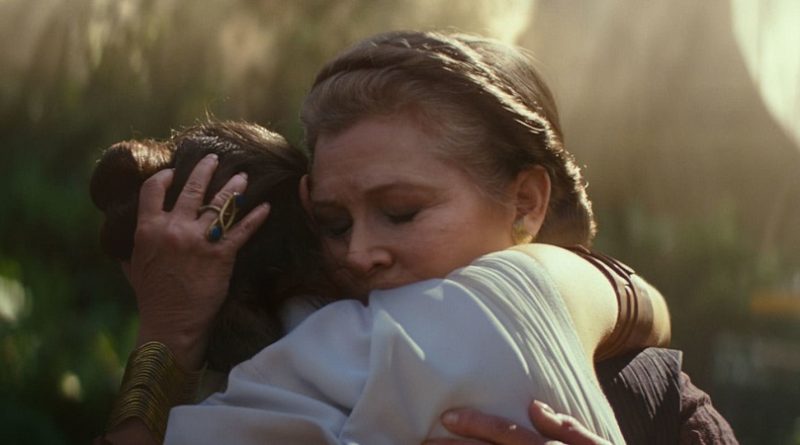








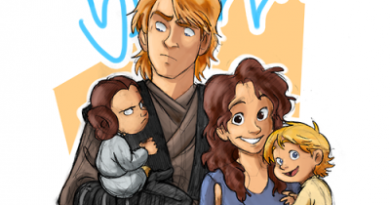
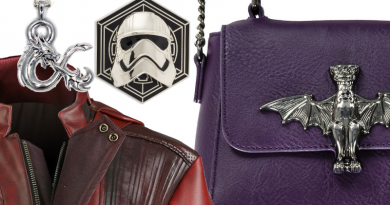
Pingback:The Failures of The Rise of Skywalker, Part 6 – FANgirl Blog